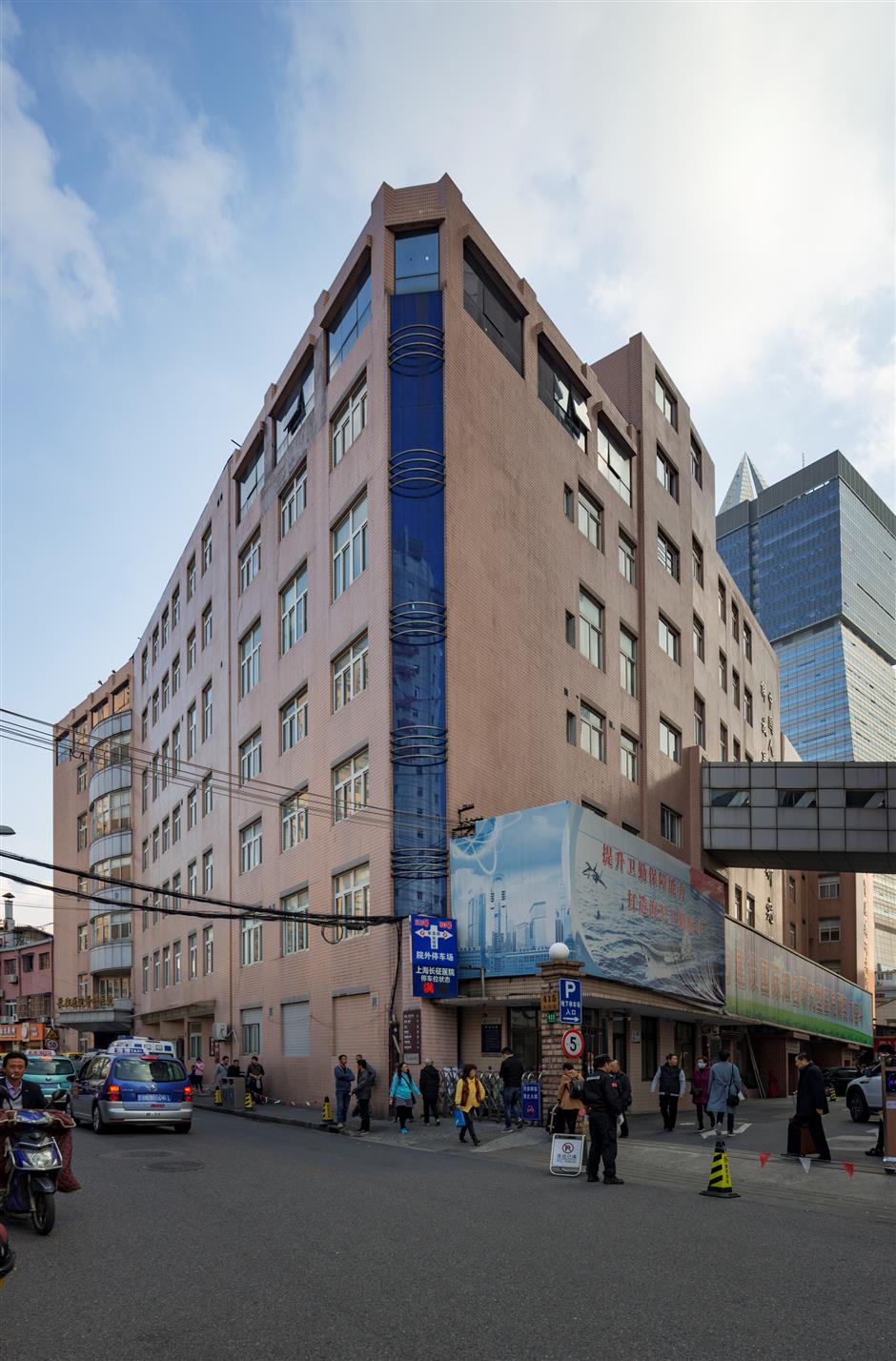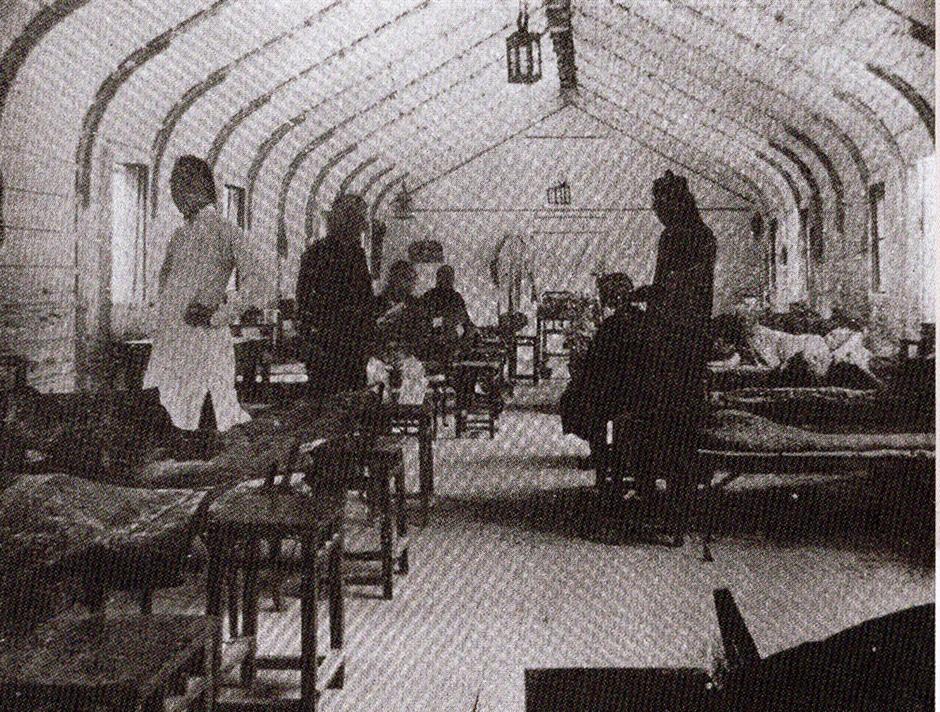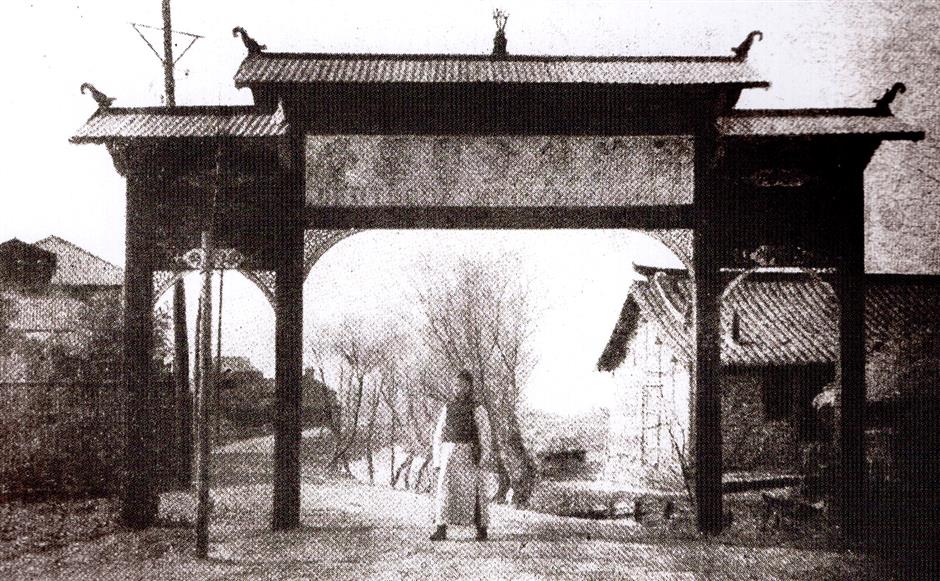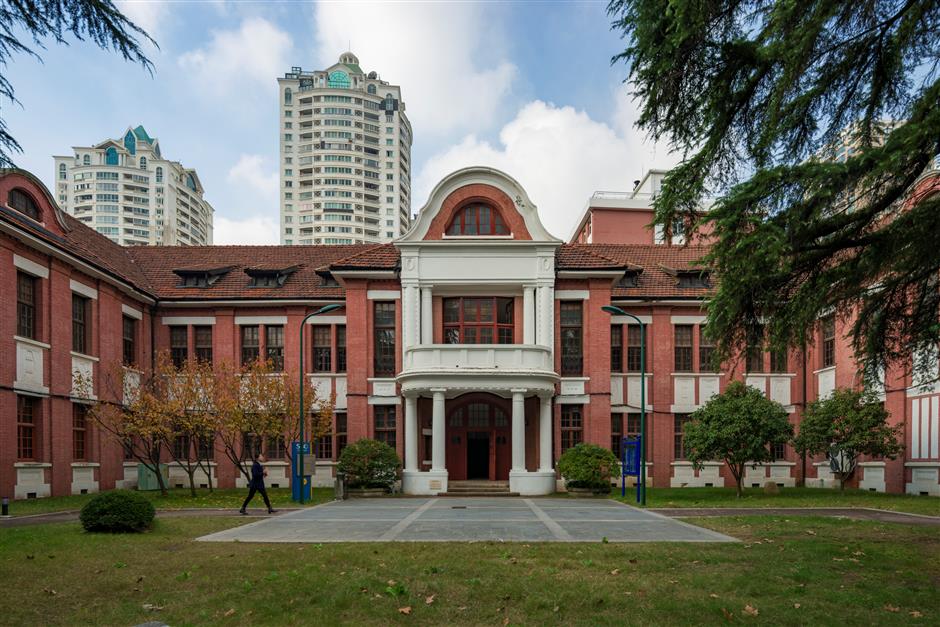Museum pays tribute to charitable hospital German built for Chinese
Shanghai Changzheng Hospital recently hosted a meeting with experts from Tongji University to establish a mini museum of its hospital history. Nearly 120 years ago, both Changzheng Hospital and Tongji University originated from the “Tung Chee Hospital” founded by German doctor Erich Paulun along the Bubbling Well Road.
“The name ‘Tung Chee’ or ‘Tong Ji’ represents the transcription of the word ‘German’ or ‘deutsche’ pronounced in Shanghai dialect. This name not only indicated the charitable hospital for Chinese was initiated by Germans, but also referred to the Chinese idiom ‘tong zhou gong ji’ meaning ‘on the same boat,’” says Li Lezeng, a Tongji University professor on Sino-German diplomatic history.
“Dr Paulun was orphaned at the age of 2 after his parents died of tuberculosis. Raised with love from other family members and the society, the orphan experience formed his personality to repay the society as a doctor,” Li adds.

The northwest corner of today’s Shanghai Changzheng Hospital building.
Founding charitable hospital
Born in Pasewalk of Germany in 1862, Paulun had studied in the Friedrich Wilhelm University in Berlin, an army medical institution, and served on Germany navy ships S. M. S. Wolf and Iltis in Asia in the late 1880s and early 1890s.
In a letter to a Shanghai-based German doctor Carl Zedelius, whom he knew during navy times, Paulun shared his idea to found a charitable hospital for poor Chinese patients who were suffering from illness and without access to medicine in old Shanghai.
To realize this hospital dream, he left the navy, worked in two hospitals in Germany to improve his surgeon skills and began raising funds. In 1895 he returned to Shanghai to work as assistant to Zedelius and became his successor after he died in 1899.
The same year Paulun and German doctor Oscar von Schab founded the Shanghai German doctors’ guild and purchased a land in Burkill Road (today’s Fengyang Road) across Bubbling Well Road to build the Tung Chee Hospital.
According to The North-China Herald on April 3, 1909, the hospital founded in 1900 “at first consisted only of a few corrugated iron buildings purchased from the German military authorities.” In 1901 a brick building was erected by funds contributed by both German and Chinese residents.

File photo of a patient ward at Paulun Hospital in Burkill Road (today’s Fengyang Road)
“On the ground floor there are a dispensary, store-rooms, out-patients’ rooms, instrument rooms and operating theatres,” the 1909 news report documents.
“The main operating theatre has three tables and is equipped with sterilizers, instrument cases, washbasins and in fact with every requisite for a modern aseptic surgery.
“A well-stocked instrument-room opens out of this theatre, and beyond is a small chamber fitted with a Sanitas electric light bath for rheumatic patients, and other electrical apparatus.
“The main dispensary, at the other end of the building, connects with the out-patients’ room, where the German doctors see between 50 and 70 charity patients every evening. Upstairs are 12 rooms for Chinese paying patients — six for men and the same number for women.”
Professor Li says the hospital treated two kinds of patients — poor Chinese in the International Settlement were treated for free while Chinese employees working for German firms were charged fees.
“The hospital was founded with the support of the then German Consul General Wilhelm Knappe who wanted to increase German influence in China through education and medical services. The hospital also received funds from Shanghai daotai (the circuit intendant for foreign affairs in Qing Dynasty), and prominent Chinese merchants including Ye Chengzhong, Zhu Baosan and Yu Yaqing,” Li says.
The hospital was renamed Paulun Hospital after the German doctor died of disease a day after his 47th birthday in 1909. In the news story regarding the change of hospital name, The North-China Herald says a few foreign residents, besides Germans, knew of the existence of the hospital which had become well-known to the Chinese.
“No more fitting memorial could be found to the name of one who gave up so much for others than to establish the institute for ever as the Paulun Hospital,” The North-China Herald reported.
Unfortunately the old buildings of the Paulun Hospital do not remain today. It’s possible that the huge extension part, designed in 1927 by Park Hotel architect Laszlo Hudec, is wrapped inside a modern surface added during a 1980s renovation.

File photo of the northwest corner of Paulun Hospital in 1928.
When Hudec’s other hospital, the Country Hospital (the No.1 building of today’s Huadong Hospital), was unveiled in 1926, the anonymous donor endowed two wards each in memory of Shanghai’s departed philanthropists—the late Dr MeLeod and the late Dr Paulun “for whom the donor had the greatest respect,” according to a report in the China Press on June 9, 1926. In the 1950s Tongji Hospital was moved to Wuhan of Hubei Province and the site since then has been used by the Shanghai Changzheng Hospital which was attached to the Second Military Medical University.
Tongji German Medical School
During the last few years of his life, Dr Paulun founded Tongji German Medical School in Burkill Road hospital with support from both German and Chinese governments. The school hosted a grand opening ceremony on October 1, 1907, which was attended by representatives of German consulates and Shanghai daotai.

File photo of Tongji German Medical School, front gate, 1908
Owing to tight space within the hospital, the school purchased land in today’s Fuxing Road M. in 1908 and commissioned German architect Carl Baedecker to design a new campus.
In 1912 the school was expanded to include engineering in its programs and got its new name as Tongji Medical and Engineering School. In the following turbulent years, the school endured many changes and moves and eventually grew to be a comprehensive university specializing in engineering which is today’s Tongji University.

File photo of the Tongji Medical and Engineering School's dormitory building in 1912.
In 1978, the then Tongji University president Li Guohao, who was professor Li Lezeng’s father, restored the university’s relationship with Germany.
Though the Paulun Hospital buildings, along the Bubbling Well Road, have been demolished, Jia Yafang from Changzheng Hospital says the upcoming mini museum will introduce an early history of this pioneering hospital.
At the Fuxing Road campus, the buildings designed by a German architect are largely preserved and used by the University of Shanghai for Science and Technology.
The red-brick buildings, in classic style are delicate inside and out, which resemble Jiao Tong University’s old library, a red-brick building of the same era in many ways. Professor Li recalls he had seen German-made medical and industrial machines for teaching in these buildings.

At the Fuxing Road campus, the red-brick buildings designed by a German architect are largely preserved and used by the University of Shanghai for Science and Technology.
In the Tongji University History Museum situated in a quiet corner of its Siping Road campus, a statue of Dr Paulun welcomes visitors at the entrance. The statue was unveiled during an exhibition of Dr Paulun in 2009 to mark 100 years of the passing of this man who had dedicated his whole life to increase medical and educational conditions of Chinese in Shanghai. It’s the only statue in the university museum. The exhibition was displayed in Shanghai, Berlin and several other German cities that year.
“Dr Paulun was such an important figure in Shanghai history. He demonstrated certain characters of some expatriates in Shanghai of that era, who regarded the city as their own home,” says Professor Wang Weijiang from Fudan University who wrote the introduction of Dr Paulun in the upcoming new edition of “General History of Shanghai.”

The statue of Dr. Paulun welcomes visitors at the entrance of the Tongji University History Museum.
Yesterday: Paulun Hospital
Today: Shanghai Changzheng Hospital
Address: 415 Fengyang Road
Architect: L. E. Hudec
Tips: It’s possible that the huge extension part designed in 1927 by Park Hotel architect Laszlo Hudec is wrapped inside the modern surface added during a 1980s renovation. Please note the similarity in architectural size and details between the current look and historical photo.
Paulun’s traces can also be found in the former German medical school campus on 1195 Fuxing Road M. and in the Tongji University History Museum which is open to the public for free.

Dr. Erich Paulun
Shanghai in mourning after philanthropic doctor dies
The news of the death of Dr. E. H. Paulun will be learnt with extreme regret by the whole community. Dr. Paulun was taken to the General Hospital only a few days ago, suffering from typhoid fever. Kidney complications set in, and he died at 4 o’clock yesterday morning from uraemia.
Dr. Paulun was one of the best known Germans in Shanghai, not only to his fellow-countrymen, but throughout the entire community.
He founded a charitable hospital for Chinese, the natural corollary to which was the German Medical School for Chinese in Burkill Road. He was a Governor of the General Hospital, member of the German School committee and a committee member of the Club Concordia, in which capacity he rendered invaluable service with his suggestions regarding hygiene in the new building.
To all Shanghai, however, he was, first and foremost, a surgeon. The nickname by which he was familiarly known was a compliment alike to his skill and nerve. Many persons owe their lives to his promptness and decision.
In good or bad weather, at any hour of the day or night, he was always at the disposal of his patients, and he treats those from whom he knew he could receive no fee with the same consideration as the wealthy. Many of his poor patients can tell of kindly acts, of money unostentatiously given them for a much needed holiday, of his care and patience during their illnesses.
Only a short time before his death Dr. Paulun said that he would have liked to live for another 20 years to carry on the profession of which he was so devoted an exponent. Though honors fell thick upon him during his career the most lasting monument of his work will be tender regard in which his memory will be held by many who had every reason to appreciate his services.
— Excerpt from The North-China Herald, March 6 1909
















